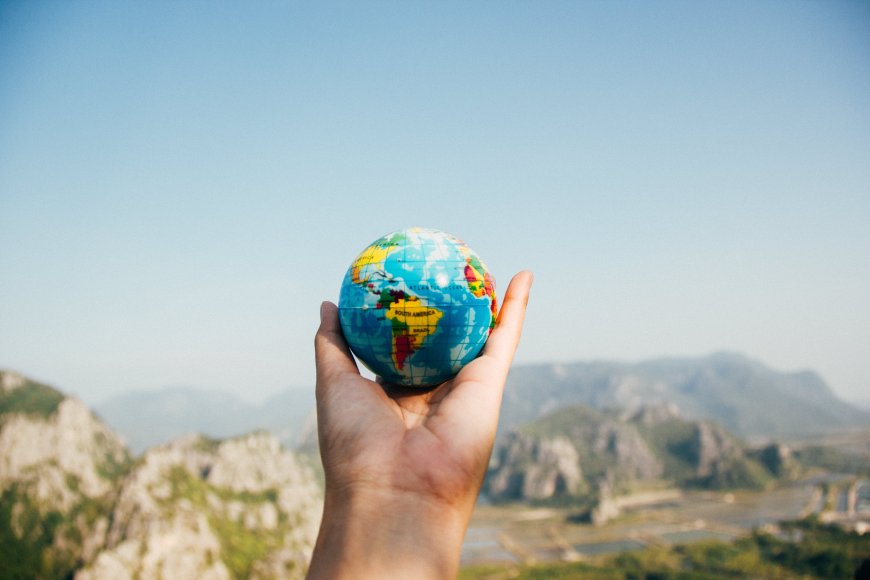Ways to Avoid the Risks of Consuming Contaminated Food and Water
Avoiding the risks of consuming contaminated food and water and promoting food and water safety involves following measures such as regularly washing hands with soap and water, storing food properly to prevent bacterial growth, ensuring thorough cooking of food to kill harmful bacteria, as well as cleaning fruits and vegetables with clean water before consumption.

Avoiding the risks of consuming contaminated food and water and promoting food and water safety involves following measures such as regularly washing hands with soap and water, storing food properly to prevent bacterial growth, ensuring thorough cooking of food to kill harmful bacteria, as well as cleaning fruits and vegetables with clean water before consumption.
Ways to Avoid the Risks of Consuming Contaminated Food and Water
The safety of food and water is one of the most crucial aspects that significantly impact both individual and public health. Contaminated food and water can carry numerous health risks, including infectious diseases, food poisoning, and adverse effects on the digestive and immune systems. Therefore, understanding the importance of food and water safety is essential for maintaining health and preventing diseases.
Firstly, we must recognize that food and water are primary sources of energy and nutrients needed for our body's vital functions. If these foods and water are contaminated, they may lead to malnutrition or the transmission of diseases, negatively affecting our health and diminishing our quality of life.
Moreover, contaminated food and water can transmit infectious diseases such as diarrhea and respiratory infections, resulting in a significant decrease in productivity and the ability to perform daily activities properly. In the long term, these diseases can lead to serious health problems and high costs for treatment and healthcare.
In addition to the health effects, the impacts of contaminated water and food extend to the economy and society. For instance, a decline in water quality can lead to deteriorating health conditions in communities, requiring costly improvements in sanitation and the provision of clean water. Also, the spread of infectious diseases due to contaminated food can affect the local economy, leading to an increase in healthcare costs and a decrease in labor productivity.
Therefore, it becomes necessary to raise awareness about the importance of food and water safety and promote healthy behaviors such as regular handwashing, proper food storage, thorough cooking, and drinking clean water. Governments and health organizations should work to provide safe environments for food and water, encourage proper production and storage practices, and implement regular monitoring and inspection to ensure compliance with international and local health standards.
The effects of consuming contaminated food and water on public health
Consuming contaminated food and water can significantly impact public health and cause numerous health problems and infectious diseases. When food and water are contaminated with harmful microbes, they become a means of transmitting diseases and germs to the body, leading to serious health issues. Below, we will discuss in detail the effects of consuming contaminated food and water on public health:
1. Food poisoning: Contaminated food and water can be highly dangerous in transmitting harmful germs such as Salmonella, E. coli, and Listeria, which can lead to food poisoning. Symptoms of food poisoning such as diarrhea, vomiting, fever, and stomach pain may appear rapidly after consuming contaminated food or drink.
2. Infectious diseases: Contaminated food and water can transmit numerous infectious diseases such as typhoid fever, cholera, and gastrointestinal infections, which can be severe and require immediate medical care.
3. Digestive system problems: Consuming contaminated food can cause digestive system problems such as diarrhea, constipation, nausea, and stomach pain, affecting the daily quality of life and reducing productivity.
4. Transmission of epidemic diseases: Contaminated food and water may serve as a means of transmitting epidemic diseases in communities, especially in areas with poor sanitary conditions and unclean water, increasing the spread of diseases among the population.
5. Effects on children and the elderly: Children and the elderly are more vulnerable to the risk of contracting diseases from consuming contaminated food and water, due to their weakened immune systems and ability to adapt to harmful germs.
Proper Handwashing Techniques to Prevent Infectious Diseases
Proper handwashing techniques are essential for preventing infectious diseases and ensuring food and water safety. Hands are one of the primary means of germ and bacteria transmission, so washing hands properly can significantly reduce the spread of diseases and protect individuals and communities from infectious diseases. Here are the steps for proper handwashing:
1. Use warm water and soap: Start by running warm water and wetting your hands. Apply an adequate amount of soap to your hands.
2. Lather hands with soap: Rub your hands together gently, ensuring to lather each hand for 20-30 seconds. Focus on cleaning the spaces between fingers, the back of hands, and under the nails.
3. Rinse hands with clean water: Thoroughly rinse the soap off your hands using clean water.
4. Dry hands properly: Use a clean towel or paper towels to dry your hands thoroughly. Avoid using a shared towel with others.
Proper food storage to maintain its safety
Proper food storage is of utmost importance to maintain food safety and prevent contamination or spoilage. Here are the details on how to store food properly
1. Separate foods: Separate fresh foods from ready-to-eat foods and partially cooked or cooked foods to avoid transferring bacteria from raw food to ready-to-eat food.
2. Use airtight containers: Use specific containers for food storage that are airtight and designed to prevent air, moisture, and insects from entering, helping to maintain food quality and prevent bacterial growth.
3. Properly store food in the refrigerator: Place fresh and cooked foods in designated areas in the refrigerator. Meats should be placed on the lower shelf to prevent liquid from leaking onto other foods, while fruits and vegetables should be stored at low temperatures and high humidity.
4. Avoid excessive freezing: When storing food in the freezer, ensure that foods do not touch each other to avoid excessive freezing, which may affect the quality of the food.
Cooking food thoroughly to eliminate bacteria and microbes
Cooking food properly is an essential step to eliminate harmful bacteria and microbes and ensure food and water safety. Here are details on how to cook food properly to achieve this goal
1. Use high temperatures: Meats, fish, poultry, and eggs should be cooked at high temperatures to ensure the killing of harmful bacteria. It is recommended to cook meats to an internal temperature of 75°C (165°F), poultry to an internal temperature of 75°C (165°F), and eggs to an internal temperature of 71°C (160°F).
2. Avoid undercooking: Undercooking should be avoided, as it leaves the food partially cooked, increasing the risk of bacterial and microbial growth.
3. Avoid post-cooking food contamination: Once food is cooked, store it in clean, airtight containers in the refrigerator if you do not intend to consume it immediately. Avoid leaving cooked but unconsumed food for long periods at room temperature.
4. Avoid frequent reheating of food: Frequent reheating of food should be avoided as it can lead to bacterial and microbial growth on the food's surface.
Using clean water and purification methods to ensure drinking water safety
Using clean water and purifying it is an essential part of maintaining food and water safety, as water plays a crucial role in food preparation and consumption. Here are details on how to use clean water and purification methods to ensure drinking water safety
1. Use clean water: Ensure the use of clean and safe drinking water. Water should be free from impurities, harmful chemicals, and microbes.
2. Water purification through home filtration systems: Home water filtration devices such as filter pitchers or reverse osmosis systems can be used to remove impurities, chemicals, and microbes from water.
3. Boiling water: Boiling water can eliminate harmful bacteria and microbes. When water reaches boiling point (100°C or 212°F) and begins to condense, it can be relied upon as safe for drinking.
4. Use commercially bottled water: Commercially bottled water can be obtained from markets and stores, which has been properly treated and purified to ensure its safety.
5. Avoid contaminated sources: Avoid using water from unclean sources such as ponds and polluted water bodies, which may be a source of harmful bacteria and chemicals.
6. Maintain cleanliness of tanks and pipes: Tanks should be cleaned and sanitized regularly, and pipes should be ensured to be safe to prevent water contamination with bacteria and fungi.
Cleaning and sanitizing methods for fruits and vegetables to reduce the risk of food poisoning
Cleaning and sanitizing fruits and vegetables is an essential step to reduce the risk of food poisoning and ensure food and water safety. Here are detailed steps for cleaning and sanitizing fruits and vegetables
1. Wash Hands: Start by thoroughly washing your hands with warm water and soap for at least 20 seconds before handling fruits and vegetables. This helps prevent the transfer of germs to the foods.
2. Rinse Fruits and Vegetables with Running Water: Rinse fruits and vegetables under running water to remove surface dirt and debris. A soft brush can be used for thorough cleaning.
3. Use Natural Antifungal Solution or Vinegar: A solution made of one tablespoon of white vinegar with a cup of warm water can be used to wash fruits and vegetables. Vinegar has antibacterial and antifungal properties that can reduce the risk of food contamination.
4. Peeling and Removing Damaged Parts: For fruits and vegetables that are consumed with the peel, carefully peel them to remove dirt and harmful chemicals. It is also advisable to remove damaged or rotten parts before consuming fruits and vegetables.
5. Dry Carefully: After washing, dry fruits and vegetables with a clean towel or paper towel. Drying helps remove moisture that could be a conducive environment for bacterial growth.
Summary
Avoiding the risks of consuming contaminated food and water is crucial to ensuring the safety of food and water and maintaining individual and community health. By implementing proper hygiene measures and following guidelines, the likelihood of exposure to infectious diseases and food poisoning can be reduced. Regular handwashing with soap and water, proper food storage in the refrigerator, and thorough cooking of meat and poultry to eliminate bacteria are essential. Additionally, fruits and vegetables should be cleaned and sanitized before consumption, and clean water should be used and appropriately purified. By adopting these measures, the risks of infectious diseases and food poisoning can be minimized, ensuring the safety of food and water for better health and improved quality of life.
Sources
1. World Health Organization (WHO):
The WHO website provides comprehensive information on food and water safety and the necessary preventive measures to avoid risks.
2. Centers for Disease Control and Prevention (CDC):
The official website of the Centers for Disease Control and Prevention offers detailed information on food safety and the risks of infectious diseases resulting from consuming contaminated food and water.
3. Food and Drug Administration (FDA):
The official website of the Food and Drug Administration in the United States provides information on food safety and the health requirements for manufacturing and storing food safely.
What's Your Reaction?



























































































